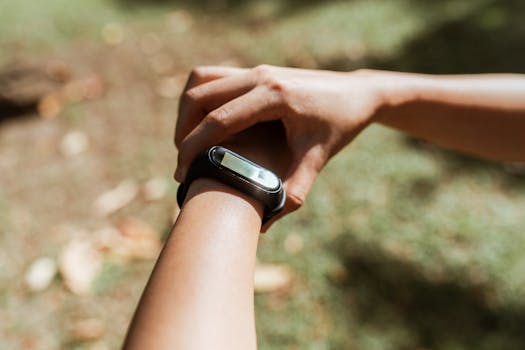
“
Beyond Fitness: The Expanding Role of Wearable Tech in Everyday Life by 2025
Beyond Fitness: The Expanding Role of Wearable Tech in Everyday Life by 2025. Wearable technology has come a long way since its inception, and its impact on our daily lives is becoming more significant with each passing day. Initially, wearable devices were primarily used for tracking fitness and health metrics, but their capabilities have expanded far beyond that. In this article, we will explore the expanding role of wearable tech in everyday life and what we can expect by 2025.
Introduction to Wearable Technology

Wearable technology refers to electronic devices that are designed to be worn on the body, either as an accessory or as a part of clothing. These devices can track various aspects of a person’s life, including their physical activity, sleep patterns, heart rate, and other health metrics. The most common types of wearable devices are smartwatches, fitness trackers, and smart glasses.
The Evolution of Wearable Technology

Over the years, wearable technology has undergone significant transformations. The first wearable devices were basic pedometers that tracked the number of steps taken by a person. However, with advancements in technology, these devices became more sophisticated, and their capabilities expanded. Today, wearable devices can track a wide range of metrics, including distance traveled, calories burned, and even monitor blood pressure and blood glucose levels. For more insights, check out From Smart Fabrics to Health Monitors: The Wearable Tech Revolution of 2025.
Applications of Wearable Technology Beyond Fitness

While fitness tracking is still one of the primary uses of wearable technology, its applications have expanded far beyond that. Some of the notable applications of wearable technology include:
- Smart Home Integration: Many wearable devices can integrate with smart home systems, allowing users to control their home appliances and lighting systems remotely.
- Mobile Payments: Wearable devices can be used to make mobile payments, eliminating the need to carry cash or credit cards.
- Navigation: Wearable devices can provide turn-by-turn directions, making it easier to navigate unfamiliar areas.
- Health Monitoring: Wearable devices can monitor various health metrics, such as blood pressure, blood glucose levels, and even detect abnormal heart rhythms.
Future of Wearable Technology

By 2025, we can expect wearable technology to become even more sophisticated and integrated into our daily lives. Some of the trends that are expected to shape the future of wearable technology include:
- Artificial Intelligence: Wearable devices will become more intelligent, using artificial intelligence to analyze data and provide personalized recommendations. For more on this, read The Impact of AI on Wearable Technology: Trends to Watch in 2026.
- Internet of Things (IoT): Wearable devices will become more connected to other devices and systems, enabling seamless interactions and controlling various aspects of our lives.
- Augmented Reality: Wearable devices will incorporate augmented reality capabilities, providing users with a more immersive and interactive experience.
Conclusion

In conclusion, wearable technology has come a long way since its inception, and its impact on our daily lives is becoming more significant with each passing day. From fitness tracking to smart home integration, wearable devices are transforming the way we live, work, and interact with our surroundings. As we look to the future, it is exciting to think about the possibilities that wearable technology holds, and how it will continue to shape our lives in the years to come. To learn more about what’s ahead, check out Wearable Tech in 2025: Bridging the Gap Between Health and Technology.





